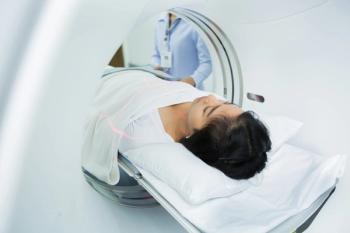
CT-Derived Fractional Flow Reserve Improves Assessment of CAD
Imaging method reduced non-confident reads, decreased time.
Coronary computed tomography angiography (CCTA) plus computed tomography-derived fractional flow reserve (FFRCT) improved assessment of coronary artery disease (CAD) severity, according to a study published in the journal
Researchers from the United States and Germany performed a quality-improvement study to assess the impact of FFRCT on reader confidence and interpretation reader time of CCTA.
Fifty patients, 23 of whom were women, participated in the study. Mean age was 67 years and body mass index 28.7 kg/m2. CCTA was acquired on 2nd and 3rd generation dual-source MDCT with use of beta-blockers and nitroglycerin. Four readers participated, two with experience level COCATS2 (Core- Cardiology-Training-Symposium) and two with COCATS3 assessed severity of epicardial CAD using CCTA alone and CCTA with FFRCT. They rated reader confidence for CAD and the four major epicardial coronary artery vessels were measured for hemodynamically significant stenosis (HS) on a 4-point Likert-scale, ranging from 1 being high and 4 being none. Time to interpret was also recorded.
Related article:
The results showed the severity of CAD in the cohort population as per the CAD-RADS (Coronary-Artery-Disease Reporting-and-Data-System) was:
- 15 for CAD-RADS1
- 8 for CAD-RADS2
- 11 for CAD-RADS3
- 16 for CAD-RADS4A
Sixty-three CA in 30 patients had minimal FFRCT values of 0.8 or less. Reader confidence when using FFRCT increased for CAD and HS. A reduction of non-confident patient read by 27% for rank 3 and 75% for rank 4. The change in confidence was associated with reader experience, but not CAD-RADS. The median time-to-read a CCTA study decreased by 5 minutes when FFRCT was available.
The researchers concluded that there was improved reader assessment for assessment of severity of CAD and HS when CCTA was used in conjunction with FFRCT. There was a reduction of non-confident reads and there was a decrease in the median time-to-interpretation of a CCTA.
Newsletter
Stay at the forefront of radiology with the Diagnostic Imaging newsletter, delivering the latest news, clinical insights, and imaging advancements for today’s radiologists.



























